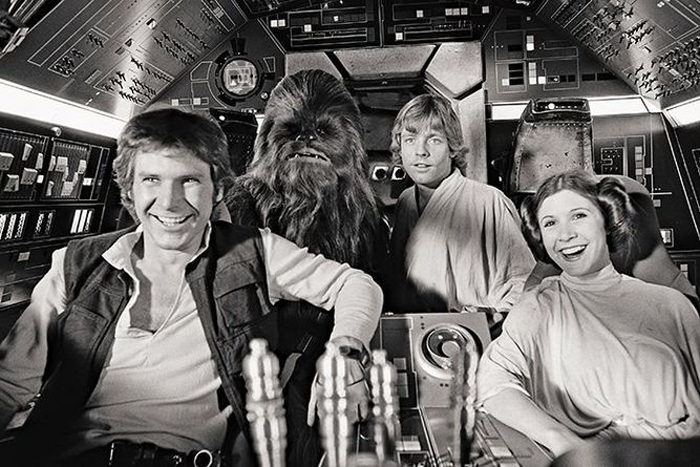
The only way to fly the friendly skies — or dark voids of space.
Credit: Tom Simpson/Flickr, CC BY-NC-ND
This article was originally published at The Conversation. The publication contributed the article to Spacecom’s Expert Voices: Op-Ed & Insights.
Last week, SpaceX held another successful launch of its Falcon 9 rocket. Unfortunately, its landing was not quite as successful as the one in December (it crashed into the ocean).
SpaceX isn’t alone in trying to develop reusable launch vehicles. Other private companies such as Blue Origin and Virgin Galactic are also in the race to achieve the dream of consistently landing a rocket after hurtling it into the heavens. Each success — and failure — gets us a little closer.
But how significant is the creation of reusable rockets? And where will we go from here? Are we finally close to the future once promised by the Jetson’s FX-Atmos “flying car” or Han Solo’s Millennium Falcon: a world of personal, space-bound transports that can leave your garage, reach orbit and beyond, and return home in time for dinner?
What else stands in the way?
The final frontier
The “democratization of space exploration ,” spurred by NASA encouraging private companies to develop and manage complete launch systems, is igniting a new age of space development and awakening a spirit of exploration and technology innovation that’s been absent from our culture for far too long.
This resurgence of interest is reflected in NASA’s latest call for astronaut applications: 18,300 hopefuls applied for just 14 positions.
And in the private sector, venture capitalists are showing the same enthusiasm by investing US$1.8 billion in space startups in 2015, compared with an average of $193 million a year over the previous 15 years. The increased demand for space access is further spurring on private companies to develop more efficient reusable rocket launch systems.
Today’s space companies aren’t the first to set their sights on such a rocket. This great feat of engineering was originally achieved in 1993, when McDonald Douglass tested the Delta Clipper Experimental (DC-X) , a prototype single-stage launch vehicle. NASA later canceled the project.
Now, it seems, the conditions are ripe once again to pick up where the DC-X left off. The private sector has started to take up this challenge, and the race is on to enhance all our lives with cheap space travel.
This future begins with the reusable rocket.
What does a reusable launch vehicle get us?
Imagine what life would be like if, after each trip to Grandma’s, we had to throw away the car. Even with the benefits of mass production, the cost to an individual would be prohibitive, especially if there exist reasonable alternatives like horses or walking. Such automobiles could be employed only by governments, extremely wealthy enthusiasts or perhaps by a few skilled specialists who lived for the challenge.
This is pretty much the situation with current spacecraft technology. Not even the Space Shuttle program achieved the lofty goal of reliable reusability, although it tried very hard. The shuttle was such a complicated system that every time it returned to Earth, intense maintenance had to be performed and systems rebuilt or overhauled, making it three times as expensive as that of an expendable rocket. For example, a shuttle launch cost $450 million to $1.5 billion , compared with $110 million for a Russian Proton rocket with about the same lift capacity.
Truly reusable launch vehicles would significantly reduce the cost of getting material and people into orbit and enable new uses of space with far-reaching socioeconomic consequences that will ultimately reduce our impact on Earth’s environment, such as space-based energy collection , mining and manufacturing.
In order to get an idea of the savings, the retail price of a Falcon 9 rocket is around $60 million to build and launch (including fuel). Given its total lift capacity of 13,150 kilograms to low-Earth orbit, this translates into a price tag of about $400,000 to ferry a 90-kilogram (198-pound) person into space. But if you had to pay only for fuel, about $300,000 a launch, the price tag drops drastically to just $2,000 for the same person. That’s not far from the cost of flying from New York to Sydney , which makes a future family vacation to a Bigelow B330 Space Habitat a viable alternative to Disney World.
At the pace things are going, we project that within 10 years the space industry will achieve the goal of a fully reusable launch vehicle. Companies and municipalities, small and big, are all starting to look into ways of taking advantage of this complete disruption in, or better yet creation of, the commercial space market.
So our next question is this: what do we need to make the Millennium Falcon — that is, a single-stage-to-orbit completely reusable spacecraft — a reality?
A little physics can help us see exactly what needs to happen and exactly how far we are from this goal.
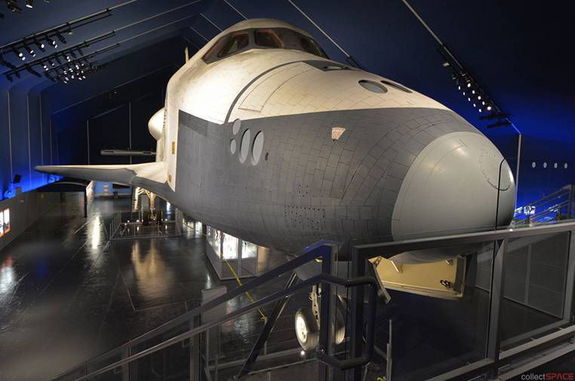
Rocket Science 101
Space travel is all about speed. The old adage, “What goes up must come down,” is true only to a point. If you throw something up fast enough, it won’t come back down; it will have escaped Earth’s gravity. The question is, exactly how fast is fast enough?
A simple application of Newtonian gravity theory tells us that if we achieve a speed of 11 kilometers per second — the equivalent of a plane flying 25,000 mph straight up — we are not going to fall back to Earth. Scientists and engineers refer to this speed, which depends on the physical properties of the Earth, as our planet’s escape velocity.
A rocket tries to achieve that speed by taking mass and throwing it out the back as fast as possible. Thanks to Newton’s third law — which states that for every action there is an equal and opposite reaction — this propels the rocket forward.
The ratio between the change in velocity needed to escape the Earth’s pull (known as delta-v) and the speed at which the rocket sends stuff out the back (exhaust velocity) is the most important number in rocket science. It determines how much mass needs to be expelled and how much energy is necessary to get to space. The smaller we can make the ratio, the better.
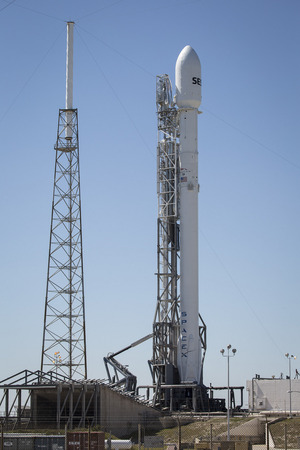
In addition, the propellants and fuels are themselves massive, and the rocket needs to carry these things with itself, making it heaver and harder to accelerate.
So we need propellants and fuels with a high energy content and low mass.
Now we can begin to appreciate the enormous feat of engineering that private companies and governments have achieved by not only launching a rocket but learning to land it as well.
The maximum achievable exhaust velocities for the rockets we’ve been using since the dawn of space travel are much less than the Earth’s escape velocity (about 4 km/s or 9,000 mph ), forcing us to come up with ingenious and costly multistage launch techniques to get even a modest payload into space.
In summary, in order to leave the surface of the Earth with the grace and apparent effortlessness of the Millennium Falcon, we need to achieve speeds in excess of the escape velocity, 11 km/s. In order to do that without carrying a fuel tank that far exceeds the size of our ship, we need to achieve exhaust speeds significantly higher than the escape velocity, something not possible with the chemical fuels we use.
So where do we go from here?
So in order to make the Millennium Falcon a reality, we need a new type of fuel, as chemical-based engines are severely limiting.
Thanks to Albert Einstein, we know that there is energy stored in mass itself. Using his famous E = mc² equation, we know that exhaust speeds up to the speed of light are achievable, and way more than necessary to escape Earth’s gravity.
A sustainable exhaust speed of 1,000 km/s, less than 1 percent of the speed of light, would pretty much enable our dream ship. Its fuel-to-mass ratio would be about the same as that of your typical car.
The next question is: how do we get access to the energy stored in the mass (fuel and propellant) sufficient to achieve those speeds? The answer lies in nuclear reactions or, better yet, matter-antimatter reactions. In short, we need to put a mass reactor, nuclear or matter-antimatter, on board our ship. Think of the Enterprise’s “warp core,” for all those Star Trek fans out there.
Nuclear rockets may seem farfetched, but various versions have already been proposed and prototypes have even been built. The Nuclear Engine for Rocket Vehicle Application (NERVA) project, a joint NASA-Atomic Energy Commission program, developed a flight-certified nuclear-based rocket engine that meets all the requirements for a manned mission to Mars.
What is interesting, and perhaps a little sad, is that this was done in 1968, over four decades ago! The NERVA engine achieved exhaust velocities pretty close to Earth’s escape velocity, around 10 km/s. The program was tied to NASA’s manned Mars exploration program and, since it was unable to justify the expense of going to Mars, was scrapped in 1972.
More recently, NASA has been developing electric propulsion systems that can generate large effective exhaust velocities that are limited only through the strength of the electric field. Effective exhaust velocities of 90 km/s are already achievable . But this is just the propulsion part. The solar panels, batteries or fuel cells that are currently used as power sources for these engines limit their usefulness. Electricity generated from nuclear power could solve this problem.
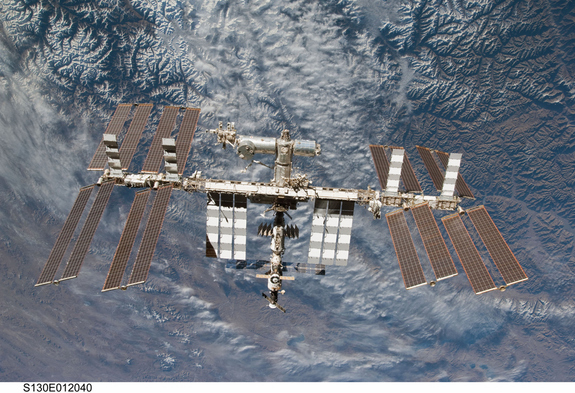
The International Space Station is primarily a science laboratory in space. NASA would like to invest in ventures beyond Earth orbit, but industry leaders fear what will happen if the agency pulls out its investment in the station before a commercial options is available.
Credit: NASA
Back to the future
With the renewed interest in space exploration and innovation, we challenge inventors and entrepreneurs to consider looking at advanced nuclear/antimatter-powered rocket systems. This could enable us to achieve the dream of a space car in our garages in half a century.
The key to all the recent advances in space exploration technology has been combining older proven technologies with modern computing capabilities, materials and fabrication processes. NASA’s push to get technologies into private hands will accelerate this process.
Back in 1972, we were at 1 percent of the needed exhaust speed. It’s not too much of a stretch to propose that, after 40 years of advances, we need only revisit the designs with fresh and entrepreneurial eyes to make it possible for a Han Solo — or, to be more contemporary, Rey Skywalker — to jump into the Falcon and speed off to somewhere far, far away.
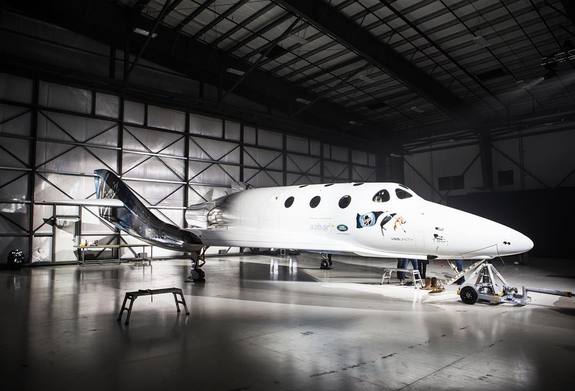
Virgin Galactic rolled out its new SpaceShipTwo on February 19, 2016, at the Mojave Air and Space Port.
Credit: Virgin Galactic
Fredrick Jenet , Associate Professor, University of Texas Rio Grande Valley and Volker Quetschke , Associate Professor, University of Texas Rio Grande Valley
This article was originally published on The Conversation . Read the original article . Follow all of the Expert Voices issues and debates — and become part of the discussion — on Facebook , Twitter and Google + . The views expressed are those of the author and do not necessarily reflect the views of the publisher. This version of the article was originally published on Space.com .

Comments are closed.